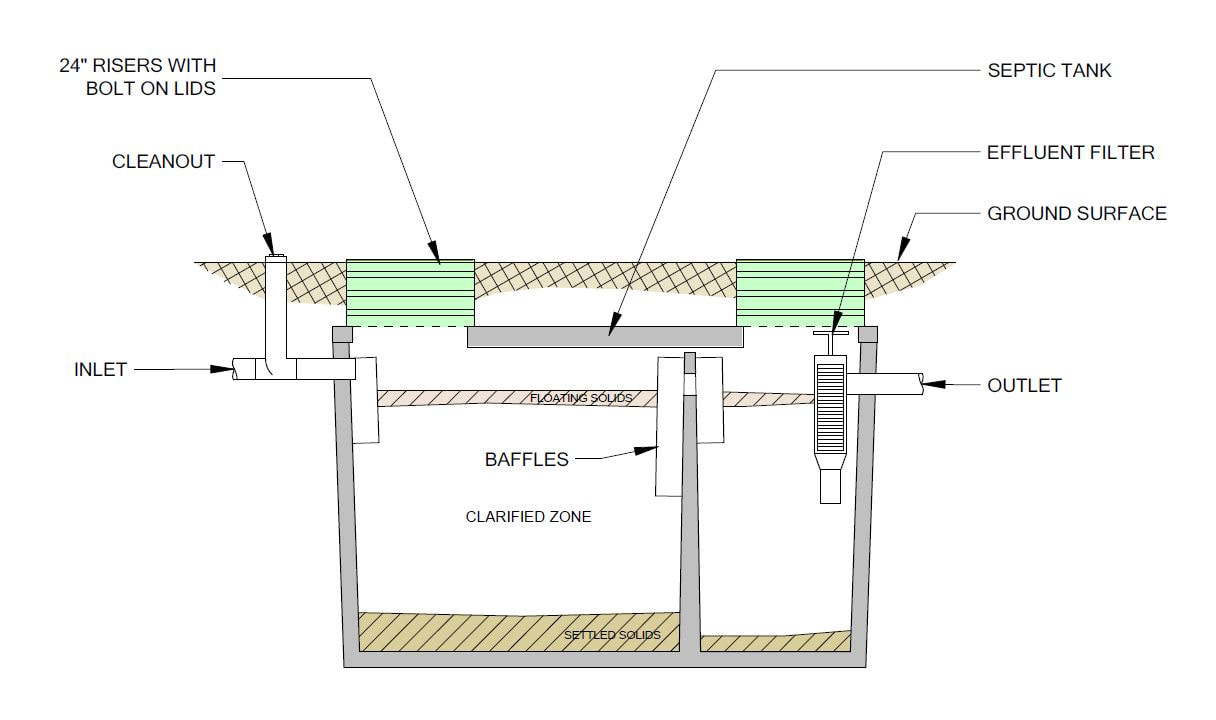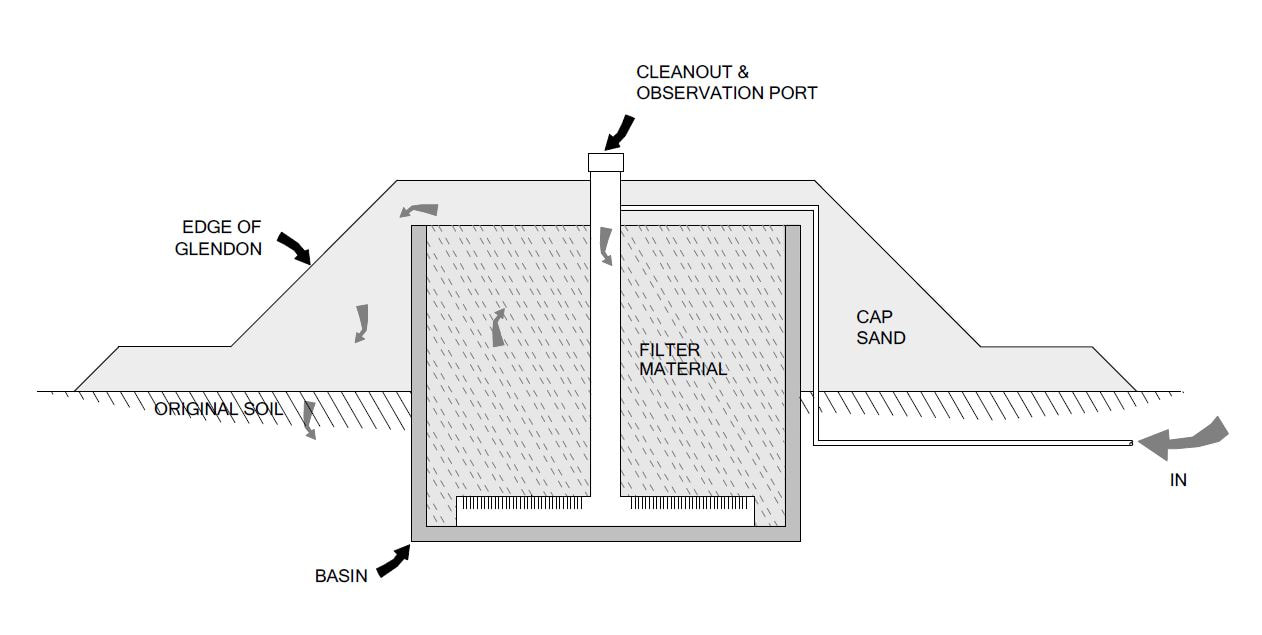What is GLENDON BIOFILTERS?
Glendon® licensees currently service three models of residential wastewater treatment unit. All units are up flow media filters and are based upon the same patented principles, which involve the biological treatment of septic tank effluent as it flows upward through sequential layers of synthetic or mineral filter media within a containment vessel that may be partially buried or set on grade depending on the model, and then out of the vessel through matric and gravitational forces. No separate drain field is required as final treatment and effluent dispersal occurs in the native soil surrounding the vessel. The effluent from the vessel is conveyed from the vessel to the prepared native soil through the cover sand material. This cover sand is the top layer of sand, which continues over the rim and out over the native soil at the perimeter of the containment vessel.
The two currently registered Glendon® Bio-Filter models share the same wastewater treatment components, incorporating pre-treatment (septic tank), dosed distribution (pump chamber, controls & mechanics), biological treatment (Bio-Filter), and treated wastewater dispersal.
(perimeter absorption area). Many of these components exist with other treatment systems. Glendon® Bio-Filters are uniquely characterised by the shape, size, volume and setting of its containment vessel or basin, the treatment media inside, the dispersal medium surrounding the unit, and the hydraulic dosing pattern to the filter.
Glendon® licensees currently service three models of residential wastewater treatment unit. All units are up flow media filters and are based upon the same patented principles, which involve the biological treatment of septic tank effluent as it flows upward through sequential layers of synthetic or mineral filter media within a containment vessel that may be partially buried or set on grade depending on the model, and then out of the vessel through matric and gravitational forces. No separate drain field is required as final treatment and effluent dispersal occurs in the native soil surrounding the vessel. The effluent from the vessel is conveyed from the vessel to the prepared native soil through the cover sand material. This cover sand is the top layer of sand, which continues over the rim and out over the native soil at the perimeter of the containment vessel.
The two currently registered Glendon® Bio-Filter models share the same wastewater treatment components, incorporating pre-treatment (septic tank), dosed distribution (pump chamber, controls & mechanics), biological treatment (Bio-Filter), and treated wastewater dispersal.
(perimeter absorption area). Many of these components exist with other treatment systems. Glendon® Bio-Filters are uniquely characterised by the shape, size, volume and setting of its containment vessel or basin, the treatment media inside, the dispersal medium surrounding the unit, and the hydraulic dosing pattern to the filter.
|
Owner’s Responsibilities:
As the owner and user of a Glendon® BioFilter, you have some responsibilities. You have to use the system correctly, protect it from damage, and ensure it is maintained periodically by Glendon® licensed professionals. Do’s and Don’ts 1.Do keep all system records such as design, permits, as-built, maintenance records, etc. in a safe place. 2.Do educate yourself about your system, how it works and where the major components are. 3.Do reduce water use by:
|
5. Do protect your system and reserve area by:
6. Do have your system checked annually by a Glendon® licensed maintenance person and have the tanks pumped as necessary. 7. Do report problems and alarms immediately to your maintenance provider. 8. Don’t allow broken or leaky fixtures to go unrepaired – your system is not designed to handle the extra water. 9. Don’t use a garbage disposal unless your system was specifically designed to handle one. 10.Don’t use septic tank additives 11. Don’t discharge water softener backwash into your system 12. Don’t use tank deodorizers, chlorine products, or other strong chemicals. They harm the microorganisms in your system. 13. Don’t dispose of non-biodegradable items in your system:
15. Don’t cover your system with impermeable materials such as plastic, concrete, etc. 16. Don’t change the shape of your BioFilter or add soil to it. 17. Don’t attempt to change system settings or tamper with the control panel. |




